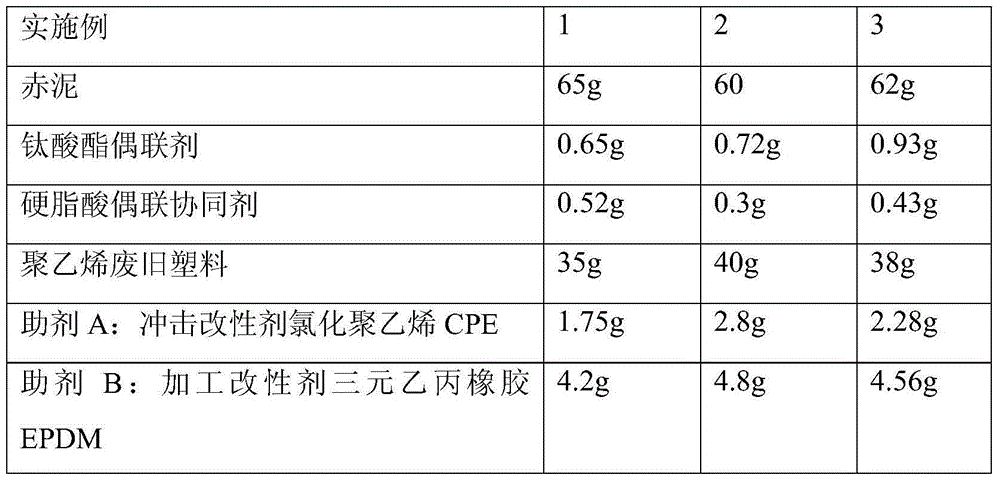Window material as well as production method and application thereof
A technology for window materials and red mud is applied in the field of recycling and utilization of industrial waste residue red mud, which can solve the problems of poor fire resistance, insufficient hardness, and no use, and achieve good sound insulation and heat insulation performance, improve processing performance, and increase dosage. Effect
- Summary
- Abstract
- Description
- Claims
- Application Information
AI Technical Summary
Problems solved by technology
Method used
Image
Examples
Embodiment 1
[0084] Embodiment 1. Preparation of window material 1
[0085] Step 1. Activate red mud:
[0086] (1) Put 65g of red mud in a rotary flash dryer and dry it so that the water content is less than 0.3%, and the particle size is greater than or equal to 150 mesh powder,
[0087] (2) Put the evaporated red mud into a DYHL300 / 600 mixing and kneading machine at a speed of 1000 rpm to generate heat from friction. When the temperature of the mixer rises to 100-110°C, remove the red mud The free moisture of the red mud should be controlled to be less than or equal to 0.3%. The general time is 2 to 5 minutes, and then the titanate coupling agent is added in an amount of 1% to 1.2% of the red mud. In the feeder, surface activate the red mud and stir for 5-10 minutes. When the temperature drops to 50°C, add coupling synergist stearic acid in an amount of 0.5-0.8% of the amount of red mud, stir evenly at 48-52°C, and discharge for use.
[0088] Step 2. Plastic and Additive Treatment:
...
Embodiment 2
[0105] Embodiment 2. step is the same as embodiment 1.
Embodiment 3
[0106] Embodiment 3. step is the same as embodiment 1.
PUM
 Login to View More
Login to View More Abstract
Description
Claims
Application Information
 Login to View More
Login to View More - R&D
- Intellectual Property
- Life Sciences
- Materials
- Tech Scout
- Unparalleled Data Quality
- Higher Quality Content
- 60% Fewer Hallucinations
Browse by: Latest US Patents, China's latest patents, Technical Efficacy Thesaurus, Application Domain, Technology Topic, Popular Technical Reports.
© 2025 PatSnap. All rights reserved.Legal|Privacy policy|Modern Slavery Act Transparency Statement|Sitemap|About US| Contact US: help@patsnap.com



